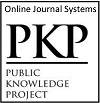SAFE ROUTING MODEL AND BALANCED LOAD MODEL FOR WIRELESS SENSOR NETWORK
Abstract
Wireless Sensor Networks (WSNs) play a very important role in providing realtime data access for Big Data and Internet. However, the open deployment, energy constraint, and lack of centralized administration make WSNs very vulnerable to various kinds of malicious attacks. In WSNs identifying malicious sensor devices and eliminating their sensed information plays a very important role for mission critical applications. Standard cryptography and authentication schemes cannot be directly used in WSNs because of the resource constraint nature of sensor devices. Thus, energy efficient and low latency methodology is required for minimizing the impact of malicious sensor devices. This paper presents a Secure and Load Balanced Routing (SLBR) scheme for heterogeneous clustered based WSNs. SLBR presents a better trust-based security metric that overcomes the problem when sensors keep oscillating from good to bad state and vice versa, and also SLBR balances load among CH. Thus, aids in achieving better security, packet transmission, and energy efficiency performance. Experiments are conducted to evaluate the performance of proposed SLBR model over existing trust-based routing model namely Exponential Cat Swarm Optimization (ECSO). The result attained shows SLBR model attains better performance than ECSO in terms of energy efficiency (i.e., network lifetime considering first sensor device death and total sensor device death), communication overhead, throughput, packet processing latency, malicious sensor device misclassification rate and identification.
Keywords
Full Text:
PDFReferences
T. M Behera, SK Mohapatra, UC Samal, MS Khan, M. Dansoman, & AH Gangdom,
“Pemilihan cluster-head berbasis energi sisa di WSN untuk aplikasi IoT,” IEEE Internet of
Things Journal, 6 (3), 5132-5139, 2019.
K. Kalkan, “SUNTEC: SDN Memanfaatkan Pengelompokan Aman berbasis Kepercayaan di IoT,” Komputer Jaringan, 178. 107328. 10.1016 / j.comnet.2020.107328, 2020.
Xueqiang Yin, dan Shining Li. “Model evaluasi kepercayaan dengan pembobotan berbasis entropi untuk deteksi node berbahaya dalam jaringan sensor nirkabel, ”EURASIP Journal on Wireless Komunikasi dan Jaringan, (2019) 2019: 198.
BD Narayan, P. Vineetha, dan BKR Alluri, “Peningkatan pemilihan kepala klaster berbasis kepercayaan dalam jaringan sensor nirkabel, "Dalam Inovasi dalam ilmu komputer dan teknik (hlm. 263-
. Springer, Singapura, 2019.
Danyang Qin, Songxiang Yang, Shuang Jia, Yan Zhang, Jingya Ma, dan Qun Ding, "Penelitian tentang Mekanisme Perutean Aman Berbasis Kepercayaan untuk Jaringan Sensor Nirkabel, "di IEEE
Access, vol. 5, hlm. 9599-9609, DOI: 10.1109 / ACCESS.2017.2706973, 2017.
DOI: http://dx.doi.org/10.22373/cj.v5i1.8420
Refbacks
- There are currently no refbacks.
Copyright (c) 2021 Julianto Agus Prabowo
except where otherwise noted.






















